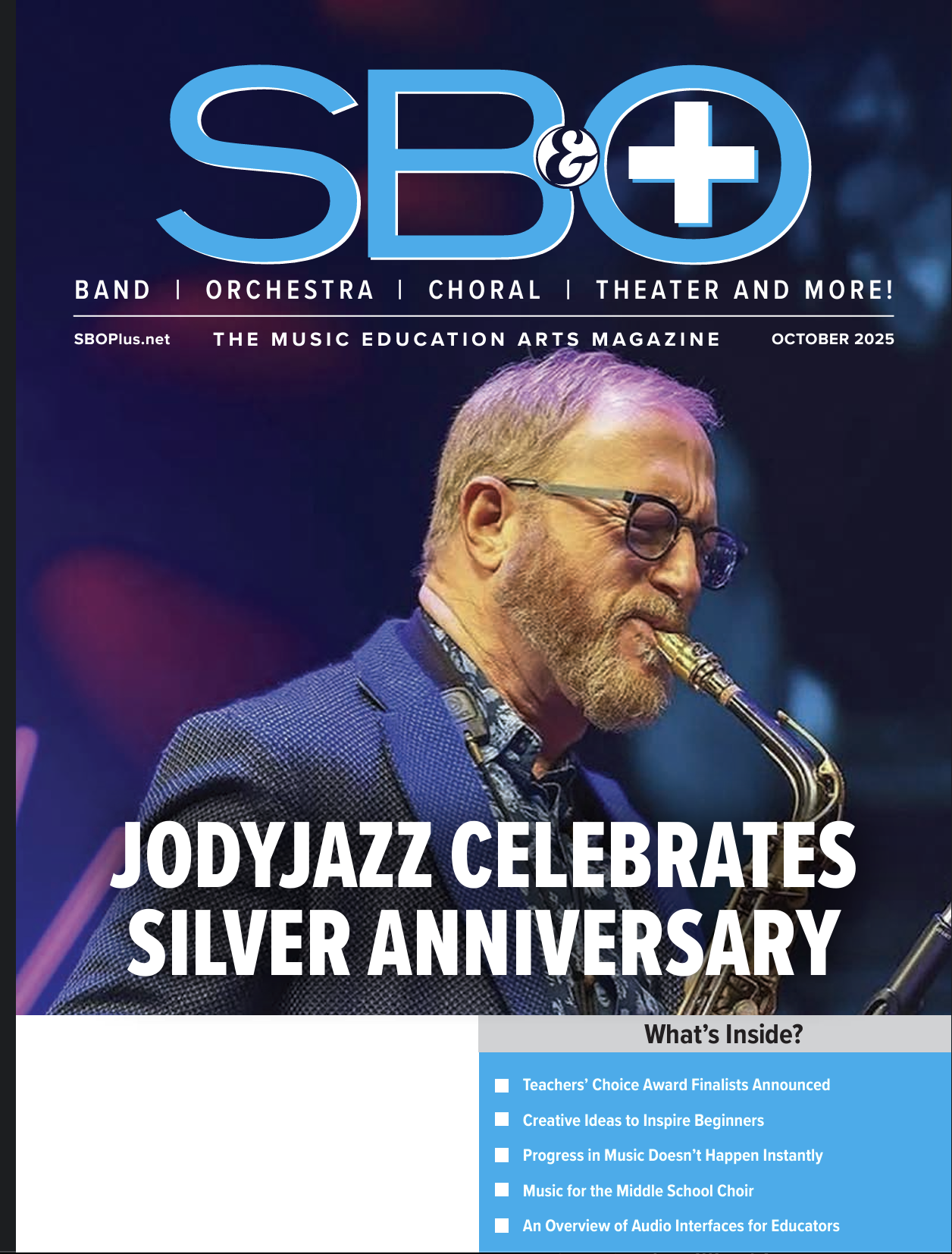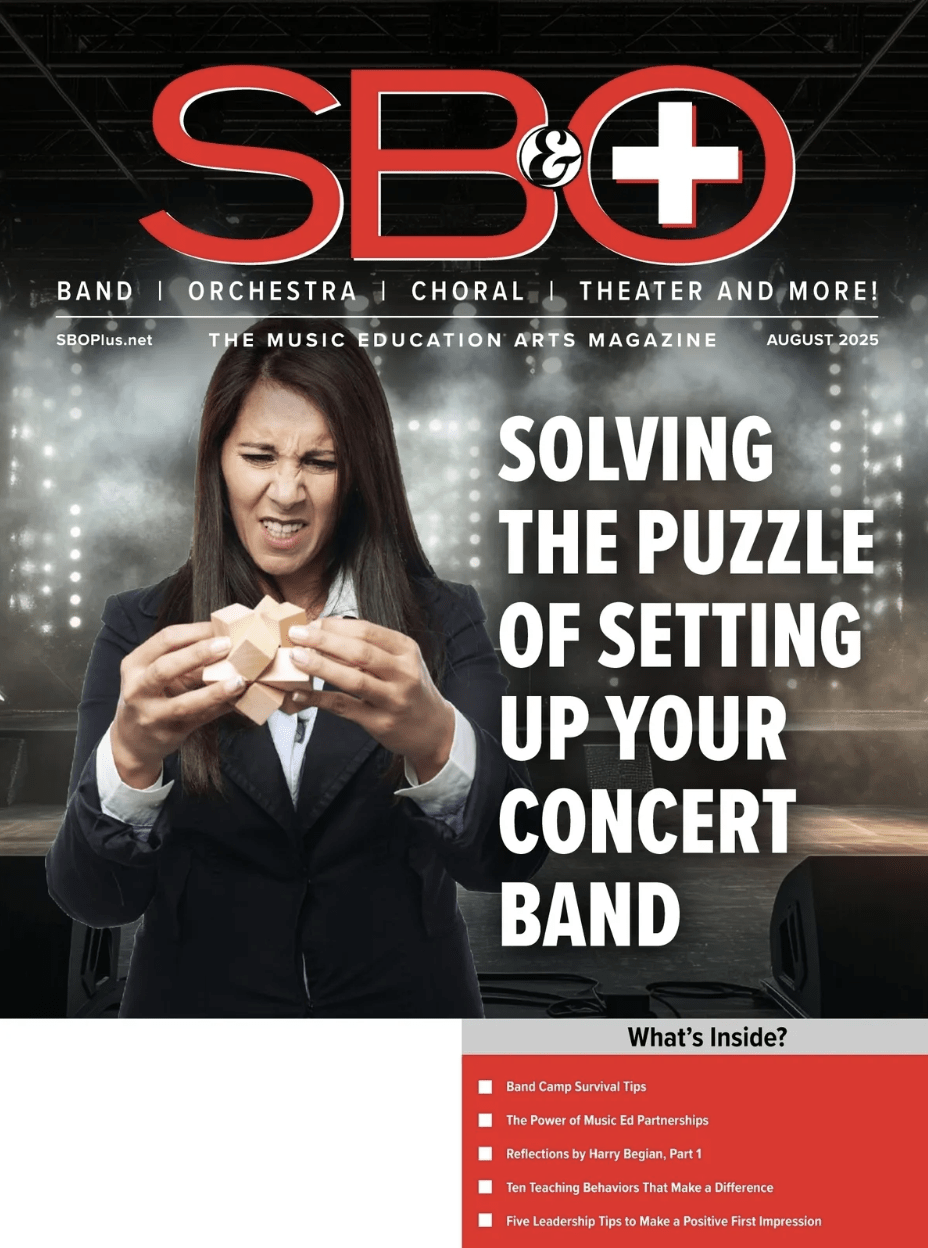
SBO+: This is part 2 in a series of articles by faculty members of the New England Conservatory who share their tips on teaching deeper listening.
Mark Zaleski, woodwinds/bass/songwriting/arranging: Memory Bank Exercise
A great way to get students of any age or experience level excited about developing their ears is to have them create their own music completely aurally (no sheet music or chord charts allowed). To get this process started, I give students my “melody bank” exercise. The purpose is to get students creating their own memorable melodies they can use in their own music.
I ask students to set a 10-minute timer once a day and try to come up with a “memorable melodic fragment” in that time. This should be a single line melody – no harmony should be included. If more advanced students say they hear chords at the same time as their melodies, ask them to resist the temptation and focus solely on the melodic content. While there are no minimum or maximum length requirements for this, mine are usually about 20-45 seconds long. They may do this with any instrument they choose. This should include their voice, and I encourage students to make sure they sometimes get away from their primary instrument when they do this. It’s sometimes fun to have them try this on instruments they just started learning, even if they don’t have performance experience on that instrument.
Once the 10-minute timer is up, ask them to make a quick recording of what they came up with on the voice memo app of their phone. Then, it is crucial they go do something else for at least an hour. Have a meal, watch a show, do homework, read a book, doom-scroll Instagram; anything not related to that melody is fair game. Sometime later that day, ask them to sing (not play back on an instrument) the melody they came up with. If they cannot, they should delete that voice memo and try again. If they can, they should save the voice memo in a playlist, or somewhere on their phone or computer. This collection of melodic fragments becomes their melody bank, and will be their source for starting completely organic, unique, honest compositions. Anything that can fit in the melody bank is almost always teachable to fellow classmates aurally. I find this not only helps students develop their melodic vocabulary and memory but creates an incredible enthusiasm and sense of community within my ensembles.
Cristi Catt, voice: The Kinesthetic Singer
The ways in which a student approaches learning music will deeply affect their relationship with a particular piece and with their overall confidence and creativity in music making. Notated music allows someone to visually document what they have heard or created. It serves as a visual reference for as long as it can be accessed or until it can be memorized. Oral traditions and learning by ear allow one to digest and carry music for as long as one can remember it. And as memories vary, music can evolve and change, especially when passing from person to person.
As a teacher, I use a variety of written, oral, and physical means in my work with individuals and groups. In my private studio, I prefer to start with moving and singing first and notation later. I begin with a vocal/physical conversation to transfer vocal exercises and song phrases, both improvised and borrowed. I call, they respond. As students respond to what they hear and mirror what they see, I can not only hear what they send back to me, but “see” their thinking through the ways they move. I respond vocally and physically, and we form our own way of communicating. Eventually, the student calls and I respond and at some point, no one is sure who is leading. I find this opens new pathways and possibilities for singing. I can tweak my methods to the individual, and they learn to practice and develop something they carry in their voice and body.
I also work this way with groups. After introducing the basic principles through a warmup, I start a call and response. If you direct choirs, bands, orchestras, or other groups, I encourage you to expand on gestures you use to conduct. Also draw on movements like tossing a ball or sweeping the floor and then allow more organic movement to spring from the music itself. Eventually the director flips the ensemble and members take turns leading. This can lead to improvisation and spontaneous arranging as students experiment with call and response, layering, harmonizing, and varying a melody as they are inspired.
I have worked with a cappella and vocal/instrumental ensembles where we never create a score. These groups continue refining and shaping, signaling, and remembering throughout rehearsals, into performances and beyond. These ideas can also be used to allow groups to explore a composed piece of music, starting with one theme. In this way they forge a deeper connection to a piece they will eventually read from a score. For more information, I eventually notated some of my oral traditions in a book, The Kinesthetic Singer: Lessons on Singing from Yoga and Basketball.





























